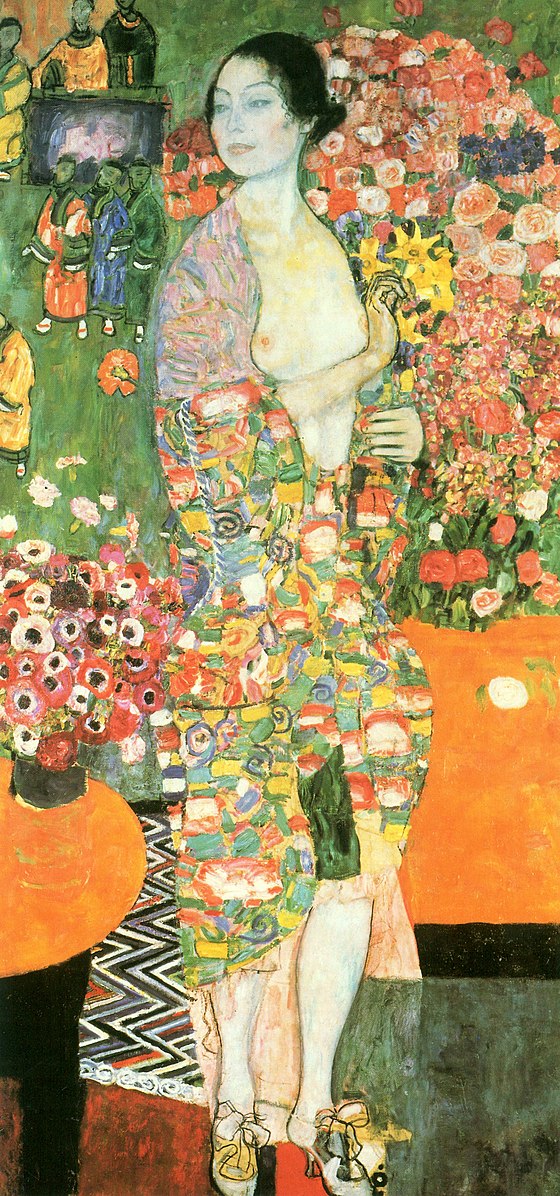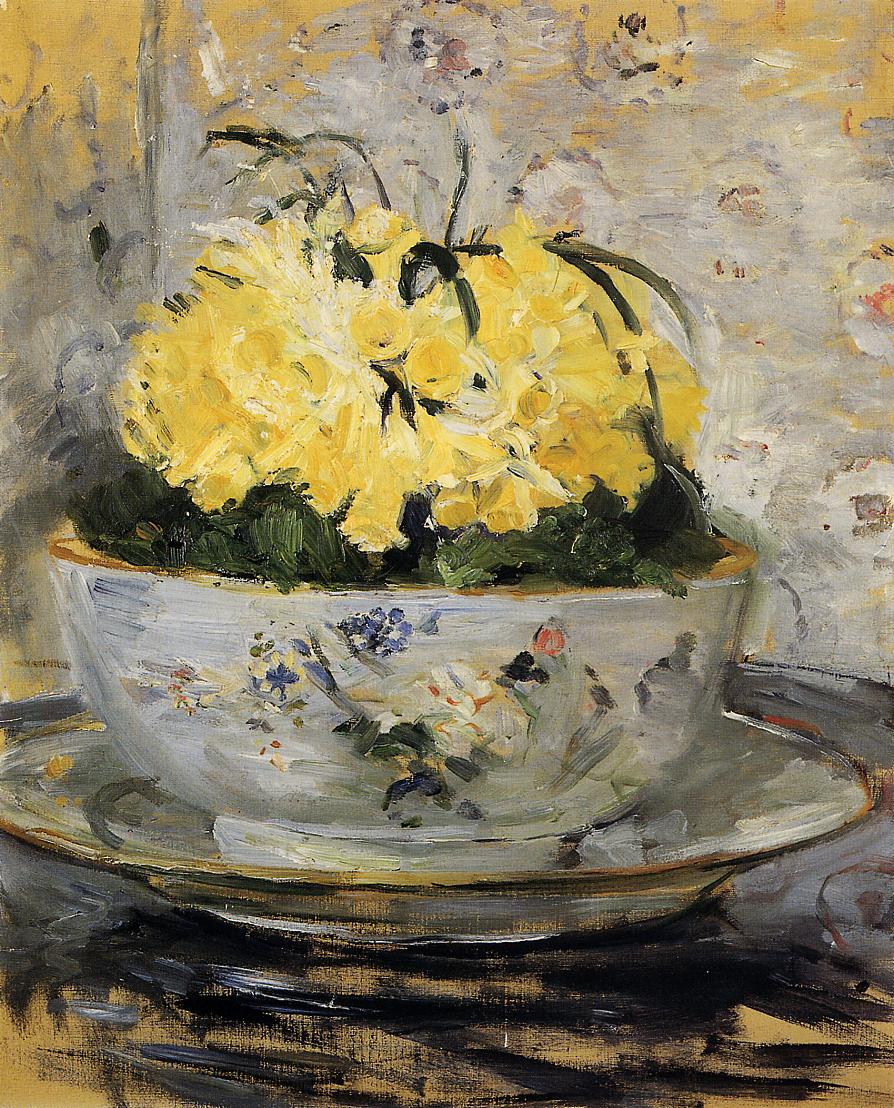
In most of the paintings in which I appear I have a rather minor role. For example, in Gustav Klimt’s mosaic ‘Die Tänzerin’ (1916-18), in which a dancer holds a small bunch of daffodils.

Or ‘When flowers return’ (1911) by the 19th-century Frisian artist Laurens Alma-Tadema, in which three young women in white robes dance together, linked by a long chain of interwoven daffodils.

But in some paintings, I am the star of the show.
Like the one painted by the French impressionist Berthe Morisot in 1885, of a teacup full of tiny daffodils.

My personal favourite is ‘Jonquils I’ (1936), by Georgia O’Keeffe.
In 1933 this American artist was well on the way to becoming a star when she suffered a nervous breakdown and was admitted to a psychiatric hospital. She had been worrying about a large commission, and to make matters worse her husband, the successful photographer Alfred Stieglitz, had taken up with another woman.
When O’Keeffe was allowed to go home, she hired her own studio and slowly started painting again.
Bit by bit she recovered, and three years after having been admitted she took a canvas, her boldest paint and a large brush, and she painted two stunningly lifelike, gigantic yellow daffodils against a pink background.
Why? I think that with a flower that symbolises a new beginning O’Keeffe was letting the whole world know: ‘I’m free, and I’m back!’